Resources
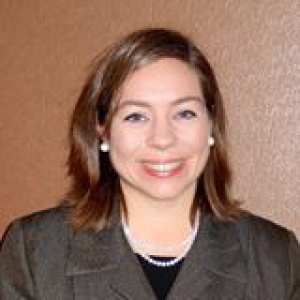
What do you know to be true now that you used to think was false? What do you know to be false now that you used to think was true? What is something you’ve always thought true that remains true? I once heard a conference presenter ask a version of these questions and now I occasionally use them in my teaching. Such questions suggest that the status of knowing grows and changes, shifts and turns over time. This is good news for teachers and students everywhere! The pliable character of knowledge is also a political matter. Libraries and lives are filled with stories about the politics of teaching and learning, particularly around matters of deeply held faith convictions and religious practices embodied in various histories, bodies, and communities today. Learning itself evokes a kind of devotional practice in which the desire to learn and to unlearn are political acts of room-making in the mind, heart, body, soul for more than this moment’s capacity. Deep learning is often accompanied by a desire to be moved, even an expansive desire that surprises us in the learning process. In and beyond my seminary teaching and learning experiences in middle America in this political climate, I am seeing a troubling divergence around the changing status of knowledge: is learning now less or more important than ever? Do expectations of room-making lean toward being moved or rather thirst for antagonistic encounters? With the striking contrast of embracing the urgency of deepening learning around current social issues such as #syllabi devoted to blacklivesmatter, sanctuary cities, women’s health, islamophobia, refugees, and more on one hand, and abandoning intellectualism in favor of relentless questioning sources of expertise or even verifiable facts on the other, how do we teach into a political moment that threatens the status of learning itself? Five Threats to Syllabi “It’s in the syllabus” is the punch line to many an academic riddle. Syllabi are blueprints, detailed instructions for shared learning experiences. Syllabi outline plans for the way in, through, and out of the course of study. The best syllabi align student learning outcomes, assignments, and learning activities in clear and compelling ways. A syllabus can also be open to change and can never be totally locked in from the start if it intends to guide a living, breathing classroom. Many syllabi thus include a caveat somewhere that goes something like this: “instructor reserves the right to amend the syllabus for the sake of deepening student learning, but not to add unexpected work.” I usually write a version of the first part on my syllabi and discuss the second part in class because change is work, even and especially change for the better amid threats to learning. In this highly charged political moment that pit bodies and communities against each other, I am seeing an increase in five interconnected syllabi threats: (1) Rejecting Close Reading: I’ve noticed increased charges of irrelevance of reading that takes time in favor of a formula such as “I used to believe that doing the assigned reading before every class was important, but now I see that it doesn’t make a difference.” Discourse includes more and more references to headlines and skimmed resources. (2) Retreating from Deep Connections across Difference: As the political moment threatens to recode inclusion as political correctness, the allure of unrestrained exclusion is appearing in class discussions in relation to readings, to other students, to contemporary figures that appear in a posture of “I don’t have anything to learn from you.” I have heard this disturbing phrase uttered in the classroom directly twice recently. (3) Receding Horizon of Moral Imagination: While I think it’s a mistake to see empathy as perfectly achievable, the act of considering the consequences of my words and actions for other people and places is critical. Therefore, I welcome many voices from texts read to voices represented in the class to perspectives notably absent from any class. Learning in conversation with many voices requires sustained willingness to consider familiar and unfamiliar perspectives – a requirement that appears less compelling in much public discourse today as relationships between texts, persons, and ideas lean far toward the antagonistic pole rather than a desire to be moved. (4) Pressuring Quick Undisciplined Performance: It can take more time to write more succinctly, yet the pace of twitter both models and encourages quick, undisciplined performance. Respond now! The pressure is on to shortchange the discipline of public discourse for rapid response. There is an art to brevity and real-time public debate that can be learned, but right now time-pressure is relentless. (5) Acting Out Around Power: Power always flows through teaching and learning, sometimes in more subtle and sometimes in more obvious ways. This political moment is evidencing more blatant efforts of grasping, hiding, pushing, and pulling people and ideas out of the way for the sake of accumulating power. These five threats aren’t unique to the moment, but also describe predictable patterns of dehumanization that we can trace over time through resurgences of oppression that depend on these kinds of threats.[i] All five of these threats to learning were sharply evident in the classes I taught during the 2016 US Presidential election. This semester, several of the same students enrolled in a different seminar class. What’s a teacher to do to support pedagogical response to these syllabus threats to the promise of becoming? How could I respond to these threats pedagogically, helping to transform my teaching plans into a syllabus of becoming? As a scholar discerning which organizations and conferences to attend, writing projects to adopt, I often ask myself, “to what extent does this support my learning and becoming?” A syllabus of becoming opens this question in the arena of teaching and learning: does this assignment, set of texts, teaching practice invite becoming? A moving syllabus transforms predictable threats into invitations of becoming. I am experimenting with the following responses to the above threats to learning: A Syllabus of Becoming (1) Reading More: In my seminar this semester we are reading fewer texts, but more closely. There is much to read. And sometimes, the very texts needed to translate careful study into prophetic and pastoral speech in today’s contexts are not yet written. So we are also creating original texts that are not eliminating, but beautifully and quite unexpectedly responding to the above threats. (2) Connecting to a Sacred Third Text: Every week, the seminar shares in common assigned reading of published texts and reading of the class itself.[ii] In addition, I invited each student to choose a third text that they consider sacred in their context. Across the first half of the semester, students have engaged lectionary readings, other Bible texts, a musician’s canon, music in general, visual art, photography, and poetry. Assigning a search for the sacred without predetermining the form has opened unexpected depth this semester. (3) Imagining Publics, Remembering What’s at Stake: In crafting the short weekly writing assignment, I left open the possibility that the set of texts we produce, or a subset of them, could be assembled as a devotional resource for a larger public within and/or beyond the seminary. Reading the first half of Patrick B. Reyes’s new book Nobody Cries When We Die[iii] early in the semester has provided language for remembering the real lives and loves at stake in reading and writing about human suffering and healing. An imaginary public also joins the room when each student reads their reflection aloud during class each week. (4) Practicing Every Week: Even though the pace of reading, writing, and conversation is deliberately slowed down with less reading and shorter writing assignments, I am amazed how class time flies by. Instead of the increased resistance and fatigue with many of the same students last semester in which I decided to scale back on practice in class (we were all exhausted and shocked albeit for many reasons), in this seminar, energy is sustained at a high register. Weekly practice with each other is creating room for mutual invitation, calling out profound connections between texts and students. (5) Sharing Voice and Power: Instead of coordinated turn-taking across the arc of the semester with different student presentations different weeks, I am trying a model where everyone shares their brief reflection or summary of it every week. Instead of power-grabbing, there are palpable and powerful moments of power-sharing every week. Politics are interwoven with personality and it doesn’t escape me that every class is its own microcosm so that what works in one class can be less successful in another and vice versa. However, I am astonished that structuring a syllabus of becoming has not only tempered palpable threats of the contemporary moment, but also made room for invitations of becoming. When discouraged at the very real threats to learning at this historical moment, I am reminded of the power and promise of a syllabus moving toward room-making. What have you found moving in your teaching and learning in such a time as this? [i] To interrogate this point with my students, we are reading Beverly Eileen Miltchell’s Plantations and Death Camps: Religion, Ideology, and Human Dignity (Minneapolis, MN: Fortress Press, 2009). While Mitchell makes plain patterns of threat that contribute to the violence of dehumanization, books like Angela D. Sims, Lynched: The Power of Memory in a Culture of Terror (Waco, TX: Baylor University Press, 2016) reminds us how taxing remembering these patterns can be, especially for more made-vulnerable communities. [ii] The field of pastoral theology uses the metaphor of “the living human document” to point to how humans can learn to read (and misread) each other on par with published texts about human experiences. For a brief overview of this metaphor, see Robert Dykstra’s Images of Pastoral Care: Classic Readings (St. Louis, MO: Chalice Press, 2005) or a more recent postcolonial interpretation in my “Literacies of Listening: Postcolonial Pastoral Leadership in Practice(s),” in Postcolonial Practice of Ministry: Leadership, Liturgy, and Interfaith Engagement, eds. Kwok Pui-lan and Stephen Burns (Lanham, Maryland: Lexington, 2016). [iii] Patrick B. Reyes, Nobody Cries When We Die: God, Community, and Surviving to Adulthood (St. Louis, MO: Chalice Press, 2016).
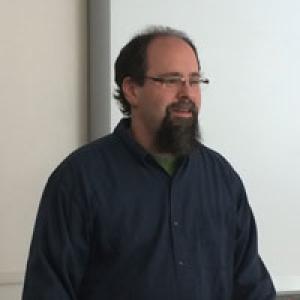
Every time I walk into a classroom or workshop for the first time, I hear the voices of elders in the long, Black-led struggle for justice pressing the questions: “How are you going to bring people into the movement? How are you going to plant the seeds and bring forth a revolution of values?” My thoughts are always about what it means to model the just peace of the society that is and has yet to be. The orientation I bring to the classroom or workshop space is one of religion and nonviolent social change focused in civic engagement and social action. The tasks and challenges we face today in the religious studies and peace studies classrooms are not unlike those faced over the past several decades. Rev. Dr. Martin Luther King, Jr. gave his “Breaking the Silence: Beyond Vietnam” sermon 50 years ago. In the sermon King called us to a “revolution of values.”[1] The revolution of values is a move away from a thing-oriented society toward a human-oriented society. It helps to create a society where everyone has their needs met and no one is oppressed. King was speaking out against the value the United States placed on the evils of racism, materialism, and militarism. According to elder Grace Lee Boggs, a revolution of values and building up the Beloved Community, are "about redefining our relationships with one another, to the Earth and to the world; about creating a new society in the places and spaces left vacant by the disintegration of the old; about hope, not despair; about saying yes to life and no to war; about finding the courage to love and care for the peoples of the world as we love and care for our own families.”[2] The recent wave of political and social violence against Black and Brown people, women, queer, non-gender conforming people, and religious minorities is not new. It is just more overt. The risks of talking about religion, politics, and the politics of religion in the classroom are high. We see friends and colleagues being labeled “dangerous.” Yet, our tasks as teachers are to critique and improve society. We do the emotional and complicated work of instilling in our students' religious literacy, a political consciousness, and a sense of calling. A large part of moving students to political consciousness and calling is the idea that human beings are all connected to one another, to the past, to the ancestors, and to the future. In other words, becoming politically conscious is to move toward the understanding that who I am is related to who you are. Simultaneously, the move toward calling presses the idea that what I do is related to social responsibility. Ultimately, what I believe about and how I live has consequences for others. In my courses, religious literacy becomes a tool for moving students into a new political consciousness. Students learn about the beliefs and practices of a variety of religious traditions and the political implications of those traditions. Along the way, students are given the opportunity to reflect on their own beliefs and practices. The pedagogical tools I have found useful in the endeavor to create a revolution of values and a new political consciousness are: Be authentic and present. I try to think of my teaching in terms of a pedagogy of relationship and community. I spend time during the first weeks of a semester allowing students to get to know one another. I treat classroom spaces as community spaces. As the professor, this means being vulnerable and transparent. Students know when a teacher is not being real. I cannot ask students to share their personal stories and experiences without being willing to do so as is appropriate. Make it real. I ask students to reflect on why religious literacy and political consciousness are helpful in their work, their relationships, their vocation, and in their civic engagement. If students can make the material relevant to themselves they are more likely to take it with seriousness. Making it real means exposing students to practitioners and the stories of real people. Teachers having their limits and being transparent about those limits allows students to see do likewise. Be clear about the end goal. If the point is to move students toward a revolution of values, then we must develop a pedagogy of transformation and hope. Too often religious and political discourse is about what we are against. In the words of elder Vincent Harding, “No matter what form education may take . . . I am convinced that one of its most important responsibilities is to nurture the realization that we can change our lives for the better, that another creative, more democratic way of life is possible, that the seeds of such a new way are already alive within us, needing to be nurtured.”[3] In these times the stakes are very high. How are we bringing people into the movement? How are we planning the seeds for a revolution of values? What are working toward? [1] King, Jr., Martin Luther, “Beyond Vietnam,” Available online at https://kinginstitute.stanford.edu/king-papers/documents/beyond-vietnam. Accessed March 8, 2016. [2] Boggs, Grace Lee. “The Beloved Community of Martin Luther King.” May 20, 2004. Yes. http://www.yesmagazine.org/issues/a-conspiracy-of-hope/the-beloved-community-of-martin-luther-king. Accessed August 14, 2014. [3] Harding, Vincent, and Daisaku Ikeda. America Will Be!: Conversations on Hope, Freedom, and Democracy. 2013, 174.
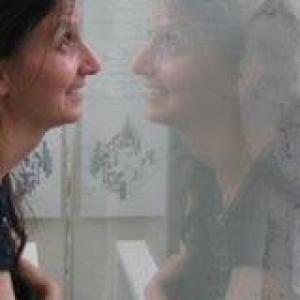
I was scheduled to write a blog post on teaching about controversial issues and how they are shaping contemporary Muslim identities in North America. Guessing, however, that many readers may be fatigued from the barrage of unfavorable events – from the U.S. travel ban on citizens of seven Muslim-majority countries to a horrible attack on a mosque in Quebec – I have decided to dedicate this particular blog to one of my favorite pedagogical tools for inspiring hope as well as a lasting sense of personal connection to the subject matter: the telling of a story. Storytelling is one of the oldest techniques that human beings have used to teach one another. From pre-Islamic times to the present day, all Muslim societies have been shaped by orality in the form of tales, fables, myths, legends, and narratives. As I have emphasized to my students, there are many purposes for storytelling: for spiritual and moral guidance; for creating a sense of the supernatural, the metaphysical, and the existential; for inspiring learning, wonder, and adventure; for critiquing self and society; and for reinforcing historical narratives, in ways that can create positive social identity as well as stereotypes, prejudices, and even a basis for ongoing conflict. Whether I am teaching an introductory course on Islam or a graduate course on Sufi expressions of Islam, some of my greatest moments in class are when I share with students a story of my living experience of traveling to particular places in the Muslim world. For this blog I would like to share a story from a visit to Egypt more than a decade ago, as a window into diverse aspects of Arab and Middle Eastern culture (I also sometimes share this story when lecturing on traditional Islamic cities). While my particular story will differ from the stories other instructors will use in their own teaching, I hope that the manner in which I communicate different realities and experiences will prompt others to harvest their own distinctive experiences, and consider which aspects of those experiences might be richest in content for students – particularly those whose ideas about Muslim-majority and Middle Eastern societies are abstract and largely gleaned from news and popular culture. In 2003, I had the honor of planning and coordinating a conference at the Library of Alexandria in Egypt. After the conference was over I lingered in Egypt for a number of days, and on my last day I wanted to go shopping for books on Sufism in Cairo. (I would share with my students that Cairo and Damascus have long been two of the greatest cities in the Middle East for finding and buying books on Sufism.) A list of books in hand, my husband and I went from one bookstore to another and then another until we finally encountered, at the very back of one store, a beautiful elderly man who wrote and then recited the following sentence on a piece paper: “You must find Abdul Rahman at 5:00 pm in Azbakeya.” Inspired by this new lead, we set out to find Azbakeya but no one knew where it was. Finally, after much searching, we found it – an area in Cairo where there were booksellers of every kind, clustered in row upon row of small metal shacks. Somewhat daunted about where to start, we began to ask where we might find Abdul Rahman. As so often happens in the Middle East, many people were willing to stop, listen, and try to help, leading us from one person to the next but still no Abdul Rahman. Eventually, though, we did find Abdul Rahman and promptly showed him the list. How long, he asked, would we be in Cairo? “We leave tonight,” we informed him. Hearing this, he physically closed his shack for the day and said, “Follow me.” Surprised by this turn of events and uncertain about exactly where we were going, my husband and I then started to follow Abdul Rahman through the busy streets of Cairo, swerving this way and that. The sunset prayer had just begun and people were bustling about – some going home, some praying on the street, and others on their way to whatever events they had planned for the evening. Abdul Rahman then did a strange thing. He climbed into the front passenger seat of a taxi cab and beckoned us to get into the back of it. Still unsure of our destination, we complied with his request and felt good about this new, unforeseen but promising development. As a professor once told us, “Surrender to the grace of the moment.” As we made our way down paved but dusty streets, we started to realize that our cab was approaching “the City of the Dead” (I would share with my students how this is an area known to be both one of the largest cemeteries in the Middle East and also a place where the poorest of Cairo’s poor find spaces to live.) Abdul Rahman was taking us to his home. The cab dropped us off in front of a modest mausoleum building, and Abdul Rahman yelled up to the second floor where his beautiful daughter, perhaps 8 or 9 years old, was holding a baby. She peeked out, ran down to the front gate, opened it, and handed the baby to her father. We then entered the building and followed Abdul Rahman to his living quarters, where there were books on all four walls, and books in boxes as well as on top of boxes and tables. We could not imagine fitting more books into one space. Abdul Rahman then handed the baby to my husband before proceeding to search his stacks, and I thought to myself, “This is the first time I have seen my husband hold a baby and it was in the City of the Dead!” Knowing his collection well, Abdul Rahman moved efficiently from one stack to another and brought forth a stack of books on Sufism. Some, he pointed out, were hundreds of years old – for instance, an early edition of Ibn al-‘Arabi’s Futuhat al-Makkiyyah. Even though we did not want to bargain – no easy task for us in any event, made somewhat more awkward by the circumstances – we then had to haggle for the books. (I would share with my students the social significance of haggling and the art to a good haggler!) Soon, after a few purchases and some small talk about baby names (Abdul Rahman cited a hadith of the Prophet to explain his own preference for boys’ names starting with Abdul [meaning servant of a particular divine quality] and etymological variations on Muhammad [which translates literally as “praising and praiseworthy”]), it was time for us to leave. We had to get back to our hotel, check out, and then leave for the airport to catch our flight. Abdul Rahman went outside and hailed a taxi for us in the City of the Dead. While conversing with our young cab driver, we discovered that he was a Nubian, with roots in Egypt’s culturally distinctive south. Upon hearing that we had come from the United States, he smiled and, with a thumbs-up signal, articulated a single word with much drama: “Schwarzenegger!” We immediately grasped his meaning, though this was our first news of the matter: Arnold Schwarzenegger had won the election, becoming governor of California. Unable to resonate with his obvious excitement, we felt what might be described as the beginning stage of reverse culture shock. My husband and I looked at each other, and could read the same meaning in each others’ faces: “We are going back to that.” In an attempt to change the subject, we tried to steer the conversation to Egypt and Egyptians – so much hospitality, and so many amazing things to see. Our driver was happy to hear of our positive experience, and appeared to enjoy the exchange. Then about five minutes before arriving at the hotel our driver pulled over to the side of the road, and turned to us with a hand signal that every visitor to the country must learn within the first day or two: “Please wait just a minute.” He then hopped out of the car and left us in it! Once again we consulted intuition but things felt good and we “surrendered to the grace of the moment.” A few minutes later, our driver popped out of a small roadside shop, slid into the driver’s seat, and turned to present us with a single rose in each hand. He looked at us with light in his eyes and said, “Welcome to Egypt!” Many of my students over the years have told me that this is one of the stories they remember. Like other stories, it beckons them to encounter the Muslim world with openness, wonder and awe rather than fear, perplexity, or prejudgment. With this story, I invite my students to enjoy the process of entering into the same sense of discovery experienced by a traveler abroad on some new journey, never quite knowing what to do or what to expect, but open to common humanity, curious about cultural nuance, and eager for the inevitable experience of surprise.

Sometimes classrooms feel like our family living room, with our families around, exposing all kinds of political positions and emotional responses, all of us trying to respond to some events that are going on in the world. We look at each other for help, or to hate, we hope for some understanding and make some sense of wild things. Our schools are in some ways, the extension of our common life and there we try to figure out our lives together. Porous as they are, schools and classrooms breathe and vibrate the world outside of them - subjectively and objectively. We get anxious about what is going to happen to our schools and if we are going to be able to cope and survive. Minorities feel the intensity of worldly events in particular ways. Thus, schools and teachers must be aware of social political events going on around us and respond to them in careful ways. When institutions offer a collective response, with open spaces and written documents, it is easier to deal with the expansive classroom responses. Let me provide two examples of what I have experienced in the US: September 11, 2001, and the election of Donald Trump in 2016. The first event was my first day of class at Union Theological Seminary in New York and the second was my first semester as a teacher at Union Theological Seminary. September 11 was a dramatic anxious day in NYC. We were lost without information and feeling so afraid. Classes were canceled and a gathering in chapel at noon was called. As we gathered, our school “pastor” started with words of assurance, sustenance, and support. We had people leading us in prayer, silence, and sharing words of wisdom for such a time as this. At the corner of the chapel, professor in Late Antique and Byzantine Christian History & Professor of Byzantine Christian Studies, and Orthodox Priest John A. McGuckin stood at a corner of chapel holding a long prayer bead and a cross that was swinging back and forth while his body moved back and forth in prayer for the world. I remember holding hands with now Prof. Jackie Hidalgo and finding solace in her company next to me. At some point, an airplane flew over our heads and we didn’t know what to expect. The whole chapel went into a deep silence as we waited for the airplane sound to disappear. We were together for about two hours and we left with more information about what was going on, how to protect ourselves and to learn how to rely on each other as the day went by. In 2016, one day after the election of Donald Trump, the whole school, surely a very liberal school, went into an emotional and political shock. Classes were not canceled but a call to gather in chapel was issued to occur after the chapel service. The worship service for that day had to be reimagined as well with lots of meditation. After worship, we were to talk about the post-effects of the election that we thought would never happen. Dr. Su Pak and I were called to lead that time and we divided the time into two main blocks: mourning and hope. We started with an introductory word from our president Serene Jones and started singing the South African song: “the journey, the journey, the journey is long… walk with me for the journey is long.” We then proceeded by opening up the floor for anyone who wanted to express their emotions, their feelings about the results of the elections in their own bodies/souls, their communities and the possible consequences of this election. This time we had Muslim and Buddhist professors and students around, as well as other (non) religious affiliations. After a long time sharing an immense variety of emotions in the warmth of a community, we opened up the space for the possibility of hope and sustained commitment to justice and peace. We left singing “the journey, the journey, the journey is long… walk with me for the journey is long.” While fragile in its approach to the immensity of these times, these collective events served as a sense of communal support that was fundamental for gaining a larger perspective, to voice our own feelings, to know we needed to support each other, especially minority communities at higher risk, and to help us keep going. After these collective events, the work that was to continue in our classrooms was somewhat easier. No classes should go without pausing to attend to events such as these and to give voice to those either agree with us or are opposed to us. For someone to voice their support to Trump at Union was not an easy thing and we teachers have to hold them in their right to speak and honor their place in our midst. In times such as these, we are tempted to demonize the ones we are disgusted with by their practices and cultivate hidden feelings that desire their sheer disappearance. It is easy to feel trapped in these opposed dualisms. However, to live with the contradictions of this seems incredibly absurd. Yet, this reality is what drives us to continue to engage each other, keep safety as a priority, and protect the most vulnerable and fight for what we believe. It is a daunting, even haunting task for the teacher in his/her classroom. If educational institutions can provide open spaces to deal with our fears and doubts and find support, we will be better teachers. At the American Academy of Religion last month, there was a space provided by some groups and led by the Liberation Theology Group that did just that: an open space was provided for conversation, to find out what to do, to learn with each other about the best ways to address political issues ourselves, with our peers and when back to our classrooms. This blog is such a public space as well. Throughout these blogs posts, we will gain a better sense of how to access and engage our realities, of how to listen to one another and make classrooms open spaces that will better prepare our students, and ourselves, to deal with our burning world.

The up-tick of media covered violence in the USA, as well as the reports of violence from around the world, causes me to pause. While I believe that experiencing the pain, suffering, and uncertainty of the world is calling us to become a nation of compassion, forgiveness, respect and equity, I am also afraid. The Golden Rule or the rule of reciprocity is pursuing us with gusto and I am fatigued. The survival of the planet depends on our willingness to examine ourselves and change. It is mid-summer, and my attentions have turned toward preparing for fall and spring courses. Given the backdrop of terrorism and violence in the world – I feel tentative and uprooted. It is easy to slip into the narrative of “an eye for an eye.” Or fall down the slippery slope of thinking that the suffering of some “expendable” populations is acceptable if others can live well as a result- just collateral damage for the greater cause of democratized capitalism. The anxiety in the nation is palpable. The media identifies the acts of violence and hatred by their geographic locations; Nice, France; Orlando; Charlotte; Ferguson (to name a scant few). We are reeling from news coverage which includes cell phone videos of neighbors and family members who are shot, mauled, assaulted, maimed and murdered. Conversations are polarized about police corruption and arrogance. Colleagues, friends, and politicians are writing public letters in response; public manifestos in protest; public statements of dismay and clarion calls for change. I am appreciative that each literary piece is like a musical note in the score for a new symphony of resistance. In the straining for meaning – comparisons are drawn. Grasping for perspective, people are comparing this 2016 era of violence to the civil rights movement. People are harkening back to the days of blatant assassinations: JFK – 1963, Malcolm X – 1965, King – 1968, Bobby Kennedy – 1968. Others are saying that the flagrant violence dappling the nation is a-day-in-the-life for our brothers and sisters in Israel – or is the everydayness for our brothers and sisters in Beirut and Iraq and Afghanistan. Some people liken the current national violence of 2016 to nights in Watts or Camden or Chicago or Detroit – where nightly gun violence and murder is normal, routine, customary - terrorizing. They use the words of Malcolm X, “… the chickens have come home to roost,” as prophetic finger wagging. The mainstream news routinely including a person who is professing that terrorist attacks cannot change our (U.S.) way of life! The person, usually a white, middle aged, man, proclaims that we must live our lives, keep our habits, and not “let the terrorists win!” I suspect my definition of “terrorists” is more expansive than his. My 88-year-old father now refuses to attend the Saturday matinee for fear of being shot. The most piercing uproar and outcry is for - what to do. Thankfully, the counter-narrative is coming on strong. Organizations like #blacklivesmatter and the Samuel Proctor Conference, led by Dr. Iva Carruthers, are diligently, systemically, and effectively working on the issues of violence, corruption and white supremacy in thoughtful, strategic and transformative ways. These organizations are calling us to empathy, compassion, and justice so we all might live and our babies yet-to-be-born might know safety. As a Drew faculty person, I am thankful for Drew graduates who are on the front lines of the 2016 fight, the 2016 journey toward compassion. An exemplar from Drew is the Rev. Dr. William Barber, II, the President of the North Carolina State Conference of the NAACP and the National NAACP Chair of the Legislative Political Action Committee. When I think of Bill and his tireless work I know I do not teach in vain. Bill’s activism and public theology is shaped, not in spite of his theological education, but by his theological education. With discipline and faith, I tell myself to gather myself – I have to, with intention, keep myself grounded. I force myself to stretch beyond myself. My impulse, like so many of us, given the events of violence across the world, is TO DO SOMETHING! When I quiet myself and take a breath I re-purpose myself to commit to teach as a service of justice. I am convinced we must marshal our smartnesses/our best minds, our most creative spirits, our best innovators to solve the problems of violence, racism, militarism – which, if unchecked, will kill us. My fears are allayed when I think of gathering with my students in the fall semester. Embedded in my course content (explicitly or implicitly) is my yearning for them to be change agents. I believe to teach well is to instill in students the ability to discern work which is meaningful, work which is transformative, work which yields compassion and empathy for the stranger. I am looking forward to challenging my students to exercise and hone their abilities to think deeply, to think imaginatively, and to think with their hearts about new ways of being in the world. The world will become more compassionate when we teach and learn that we all are God’s children – no exceptions. Obscure classrooms in seminaries are full of people who will partner with and collaborate with Bill Barber and the others. My job is to train folks in such a way that they are not seduced nor intoxicated by the trivial, and who can engage the deeper issues of alienation, xenophobia, and hatred which are our plague. The old moorings are gone and the new ones are wrenching and cricking into existence. My job is to assist my students in doing work that is worth doing – the work of justice and compassion.
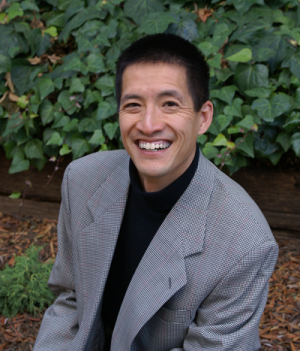
Tat-siong Benny Liew Class of 1956 Professor in New Testament Studies College of the Holy Cross “You are now entering the real world.” This is undoubtedly one of the most popular remarks that college/university graduates hear around the time of their commencement ceremony. The comment implies, of course, that life

Nancy Lynne Westfield Associate Professor of Religious Education Drew Theological School The proximity of violence is the terror. Violence is not new – it is, for much of our society and in many, many ways, a preferred way of life. The illusion is that violence can be controlled, patrolled, contained,
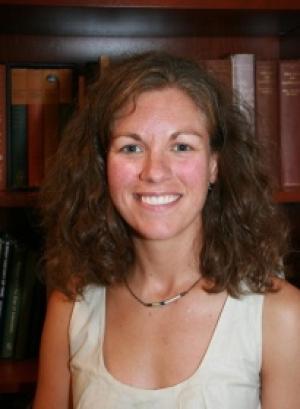
Dr. Molly Bassett Associate Professor of Religious Studies Georgia State University By the time you read this, I will have met the students in “Religious Dimensions in Human Experience: Between Animals and Gods.” In this completely redesigned dual-level (grad/undergrad) course, we will explore how people can know a single animal—the...
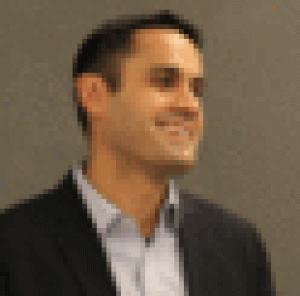
Eric D. Barreto Editor’s note: Today’s blog is Eric's final individual entry for this year of Stories from the Front (of the Classroom). Look for our final collaborative post on Tuesday May 19. One of the things I love most about teaching is the rhythm of the academic year: the...
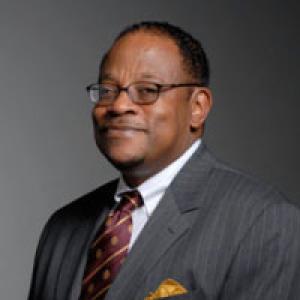
Stephen G. Ray Jr. Neal A. and Ila F. Fisher Professor of Theology Garrett-Evangelical Theological Seminary I admit that I was a bit flumoxed by how disoriented most of the students in my class were through much of the semester. My two very talented TAs were likewise lost for an answer. We realized late in the game that the reason for this seeming disorientation was there before us the entire time - we just resisted seeing it. Before continuing, it might be helpful if I shared a pedagogical decision I made about the teaching of the class. As I shared...
Wabash Center Staff Contact
Sarah Farmer, Ph.D
Associate Director
Wabash Center
farmers@wabash.edu